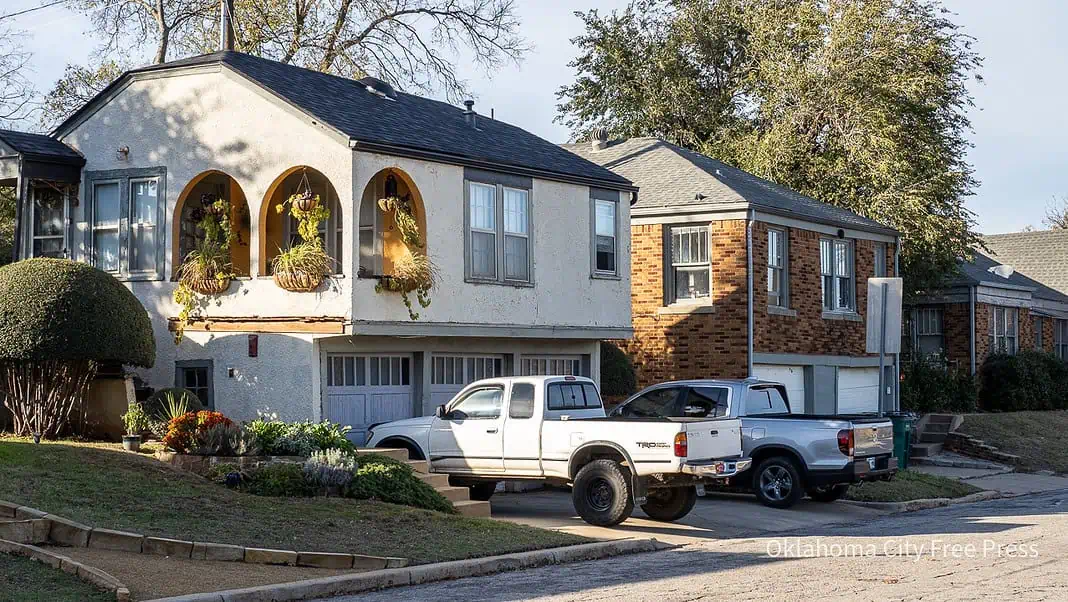OKLAHOMA CITY — Residents’ embrace of newly allowed accessory dwelling units in the City of Oklahoma City has been less enthusiastic than many expected, but City officials are still hopeful that the results can ease the increasing need for affordable housing.
Following years of contentious debate, pushback, and compromise, City leaders in June finally approved new regulations allowing for the long-outlawed accessory dwelling units, or ADUs, to be constructed and occupied in areas of the city’s “urban medium” and “urban core.”
An ADU is any secondary living unit that includes cooking and sanitation accommodations on the same plot of land as a residential house, and with the exception of some that had been specially zoned or grandfathered in from years past, ADUs had been disallowed in OKC for decades.
As the city faces an historic and continuing housing crisis, leaders and officials moved to once again allow ADUs “by right” — without the need for special zoning permissions.
Then, after years of planning, debate, and resident input, the new allowance went into effect in June.
But in the first three months since the adoption of the regulations, the city has not seen the wave of neighborhood-changing, residential street-congesting ADU construction that many detractors feared.

As of mid-September, there have only been 5 permits submitted for new ADUs.
“It’s not been this groundbreaking, transformative event for the city yet, at least not in the first few months,” OKC Development Center Manager Scott Wise told Free Press in a call on Wednesday. “Maybe in the long term, it’ll have a larger effect, but there’s not been this large influx at the moment.”
While some opponents of the new ADU allowance voiced concerns of significant neighborhood congestion and incompatibility with a potential wave of quickly constructed new backyard units, City officials said that this slower, more measured rollout was what they always expected.
“We had told people we really didn’t think they would happen all at once,” Lisa Chronister, Assistant City Planning Director, said on the same call Wednesday. “In our materials to the City Council, we had to articulate roughly how many permits we thought would be generated, and we said likely 10 or 12 a year. So roughly speaking, we’re kind of on track for that.”

Though building developers and real estate brokers openly backed the efforts to draft and pass the new ADU regulations, there’s yet to be a major showing of ADU development or construction in the newly allowed areas.
That could, in part, be due to the rapidly inflating cost of building materials, which has risen dramatically since the beginning of moves to lift the ADU ban.
“I haven’t seen any studies, so I can’t know for sure,” Chronister said, “but economic uncertainty, political uncertainty, interest rates, tariffs, building materials. These are all dynamics that make people think twice about taking on major purchases.”
Wise said that it also remains to be seen if more ADUs will start to be included in new home construction rather than as additions to existing homes.
“Residential construction is actually booming, and in the last two months, we’ve seen record-breaking submittal numbers for new homes,” he said, attributing much of that boom to out-of-state and international companies. “But we’ve also had some developers say that they plan to offer ADUs as additions to their new constructions.”
And then, of course, there are the ADU rentals that have been operating quietly since long before the new allowance went into effect. With those units appropriately permitted and recognized, it could help to increase the city’s ADU rental stock and legitimize the allowance as a means to aid housing efforts.
“We do assume there are some out there that have been operating illegally,” Wise said, “and we’re hoping that this will kind of bring them into the fold with compliance in the long run.”
But even with only five new ADUs currently permitted for construction, and with the overall rollout happening more slowly than some expected, Chronister still believes that ADUs can help to provide some relief to the city’s shortage of affordable urban housing over time.
“Even if neighborhoods get just one or two accessory dwellings per year, in 10 years, you’ll have twenty more places to live,” she said. “In perpetuity, we are providing for gentle density that’s going to strengthen neighborhoods and help everyone. So only five is not a failure. It’s incremental.”
Brett Fieldcamp is our Arts and Entertainment Editor. He has been covering arts, entertainment, news, housing, and culture in Oklahoma for 15+ years, writing for several local and state publications. He’s also a musician and songwriter and holds a certification as Specialist of Spirits from The Society of Wine Educators.










